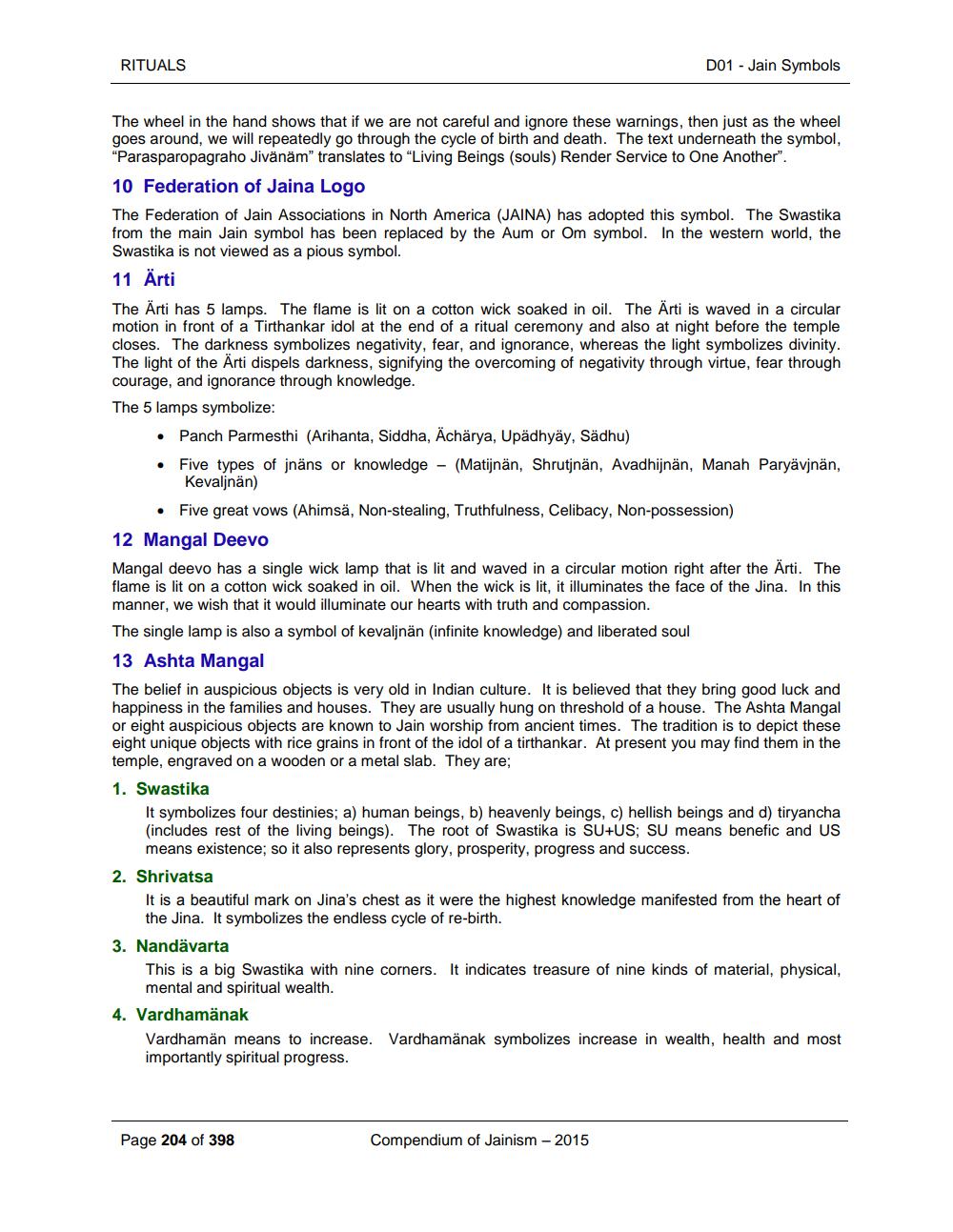________________
RITUALS
D01 - Jain Symbols
The wheel in the hand shows that if we are not careful and ignore these warnings, then just as the wheel goes around, we will repeatedly go through the cycle of birth and death. The text underneath the symbol, "Parasparopagraho Jivanam" translates to "Living Beings (souls) Render Service to One Another". 10 Federation of Jaina Logo The Federation of Jain Associations in North America (JAINA) has adopted this symbol. The Swastika from the main Jain symbol has been replaced by the Aum or Om symbol. In the western world, the Swastika is not viewed as a pious symbol. 11 Ärti
The Ärti has 5 lamps. The flame is lit on a cotton wick soaked in oil. The Ärti is waved in a circular motion in front of a Tirthankar idol at the end of a ritual ceremony and also at night before the temple closes. The darkness symbolizes negativity, fear, and ignorance, whereas the light symbolizes divinity. The light of the Arti dispels darkness, signifying the overcoming of negativity through virtue, fear through courage, and ignorance through knowledge. The 5 lamps symbolize:
• Panch Parmesthi (Arihanta, Siddha, Acharya, Upadhyay, Sädhu) • Five types of jnäns or knowledge - (Matijnän, Shrutjnän, Avadhijnän, Manah Paryävinän,
Kevaljnän)
• Five great vows (Ahimsä, Non-stealing, Truthfulness, Celibacy, Non-possession) 12 Mangal Deevo Mangal deevo has a single wick lamp that is lit and waved in a circular motion right after the Arti. The flame is lit on a cotton wick soaked in oil. When the wick is lit, it illuminates the face of the Jina. In this manner, we wish that it would illuminate our hearts with truth and compassion. The single lamp is also a symbol of kevaljnän (infinite knowledge) and liberated soul 13 Ashta Mangal The belief in auspicious objects is very old in Indian culture. It is believed that they bring good luck and happiness in the families and houses. They are usually hung on threshold of a house. The Ashta Mangal or eight auspicious objects are known to Jain worship from ancient times. The tradition is to depict these eight unique objects with rice grains in front of the idol of a tirthankar. At present you may find them in the temple, engraved on a wooden or a metal slab. They are; 1. Swastika
It symbolizes four destinies; a) human beings, b) heavenly beings, c) hellish beings and d) tiryancha (includes rest of the living beings). The root of Swastika is SU+US; SU means benefic and US
means existence; so it also represents glory, prosperity, progress and success. 2. Shrivatsa
It is a beautiful mark on Jina's chest as it were the highest knowledge manifested from the heart of
the Jina. It symbolizes the endless cycle of re-birth. 3. Nandävarta
This is a big Swastika with nine corners. It indicates treasure of nine kinds of material, physical,
mental and spiritual wealth. 4. Vardhamanak
Vardhaman means to increase. Vardhamänak symbolizes increase in wealth, health and most importantly spiritual progress.
Page 204 of 398
Compendium of Jainism - 2015




